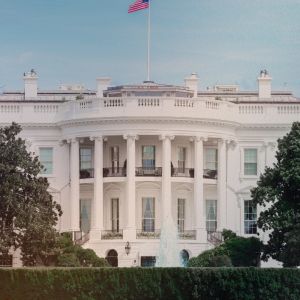U.S matches its largest Treasury buyback in history with another $10B debt redemption
4 min read
The U.S. government bought back another $10 billion of its debt through the Treasury Department on June 10. The Treasury’s latest move has matched the largest buyback of its bonds in history from June 3, with its previous largest buyback being in 2000, at approximately $3 billion. According to the Bureau of the Fiscal Service, the Treasury also repurchased the full amount of its maximum target for the operation on June 3, which was capped at $10 billion, out of a total of $22.87 billion in par value offered by market participants. The maximum per value offered by market participants for redemption in the latest buyback was $18.1 billion. Treasury matches the largest buyback in history 🚨 United States Treasury 🚨 THEY DID IT AGAIN! U.S. Treasury just bought back another $10 Billion of its own debt, matching the largest Treasury buyback in history (and that was from last week)! pic.twitter.com/OxyvDWWV76 — {Matt} $XRPatriot (@matttttt187) June 12, 2025 The department acknowledged that the previous June 3 $10 billion buyback initiative was designed to repurchase securities maturing between July 15th and May 31st, 2027. Buybacks allow the Treasury to retire outstanding debt early, potentially reducing interest costs and adjusting its debt profile. The department’s June 10 operation hit its $10 billion maximum buyback target, where of the 40 eligible issues, 18 were accepted in the buyback, demonstrating significant market participation and investor willingness to offload mid-term Treasury notes. In last week’s buyback, the Treasury also revealed that of the 40 eligible issues, 22 were accepted in the repurchase. The repurchase arrived at a crucial moment for U.S. fiscal policy. It could signal new approaches to managing the federal government’s $34 trillion national debt load amid changing economic conditions, rising interest rates, and global investor sentiment. The country’s interest payments on that debt are also expected to top $1 trillion annually by 2026 if current trends continue. The government’s current debt has raised concerns among both policymakers and investors regarding the structural balance of the federal budget. Former Treasury official Martin Keller said the buybacks are not just about reducing numbers on a spreadsheet but about reestablishing confidence in the government’s ability to manage its obligations and create smoother functioning in the capital markets. “There’s a clear macroeconomic logic to this. With the Federal Reserve signaling a potential pause in rate hikes, the Treasury may be trying to create a breathing room in the secondary market and reduce crowding from short-term issuance.” -Elaine Parker, Senior Economist at the Brookings Institution. A Treasury spokesperson mentioned that the department was committed to managing the nation’s finances with both short-term flexibility and long-term sustainability. According to the department’s spokesperson, the buyback is part of the U.S.’s strategic debt management approach to ensure smoother market operations and reduce future borrowing costs. Jamie Liu, managing director at Capital Horizons Group, argued that the buybacks may not alter the debt trajectory in the near term unless it is followed by a series of similar actions or a broader structural plan. Treasury evaluates future buybacks for future executions According to Jeff Gundlach, Scott Bessent discussed extending maturities and lowering coupons on Treasuries held abroad. This is tantamount to a default. The fact that a sitting U.S. Treasury Secretary is speaking publicly about default should cause foreigners to dump Treasuries. — Peter Schiff (@PeterSchiff) May 7, 2025 In an April interview with Bloomberg, Treasury Secretary Scott Bessent dismissed concerns about foreign countries fueling a bond market selloff, pointing instead to investors unwinding leveraged positions. He also called out the Treasury’s ability to increase its buyback program if necessary. When asked whether he’s discussing concerns about the stability of the Treasury market with Powell, Bessent also dismissed the notion that there’s any cause for alarm. The repurchase of bonds comes as rising yields increase borrowing costs, with Federal Reserve Chairman Jerome Powell continuing to keep interest rates higher for longer. At the time of publication, the 10-year Treasury yield is currently at 4.405%, while the 2-year Treasury yield is at 3.937%. Median forecasts from nearly 50 bond strategists in a June 6-11 Reuters survey predicted the 10-year yield would decline a modest 13 basis points to 4.35% in three months and to 4.29% in six months. The survey also showed that the more interest rate-sensitive 2-year yield was forecast to decline a slightly steeper 17 basis points to 3.85% in three months and to 3.73 by the end of November. Additional buybacks are being evaluated for future execution, depending on market conditions and fiscal developments, according to Treasury sources. The U.S. government has also not yet confirmed if debt redemptions will become a regular feature of its debt management strategy. Cryptopolitan Academy: Want to grow your money in 2025? Learn how to do it with DeFi in our upcoming webclass. Save Your Spot

Source: Cryptopolitan



